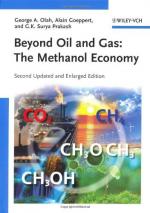|
This section contains 306 words (approx. 2 pages at 300 words per page) |
Methanol (methyl alcohol, CH 3 OH) is the simplest of the alcohols. It is the natural by-product of wood distillation—an older method of producing drinking ALCOHOL (ethanol). Chemically synthesized methanol is a common industrial solvent found in paint remover, cleansing agents, and antifreeze. It is used to denature the ethanol found in some of these solutions and thereby render them unfit for drinking.
Methanol ingestion is usually accidental, but some alcoholics resort to the desperate measure of consuming methanol when they cannot obtain the beverage ethanol. Persons working in poorly ventilated areas can suffer ill effects from inhaling methanol-containing products, and ingestion of methanol is considered a medical emergency. Methanol is metabolized to formaldehyde and formic acid by the same liver enzymes that break down ethanol (these are alcohol dehydrogenase and aldehyde dehydrogenase). The formaldehyde and formic acid are toxic metabolites responsible for the symptoms of methanol poisoning; these appear several hours or days after methanol ingestion. Blurred vision, leading to permanent bilateral blindness, is characteristic of methanol poisoning. The accumulation of formic acid results in severe metabolic acidosis, which can rapidly precipitate coma and death. Other symptoms of methanol toxicity include dizziness, headaches, cold clammy extremities, abdominal pain, vomiting, and severe back pain.
The treatment for methanol poisoning is sodium bicarbonate, given to reverse the acidosis. In more serious cases, dialysis may be required; in addition, ethanol is given intravenously because it competitively binds to alcohol dehydrogenase, thereby slowing the production of toxic metabolites and allowing unchanged methanol to be excreted in the urine.
Bibliography
KLAASSEN, C. D. (1996). Nonmetallic environmental toxicants: Air pollutants, solvents and vapours, and pesticides, 1673-1696, In: The pharmacological basis of therapeutics HARDMAN, J.G., LIMBIRD, L. E., MOLINOFF, P. B., RUDDON, R. W., GILMAN, A. G. The pharmacological basis of therapeutics, 9th ed. New York: McGraw-Hill.
|
This section contains 306 words (approx. 2 pages at 300 words per page) |


